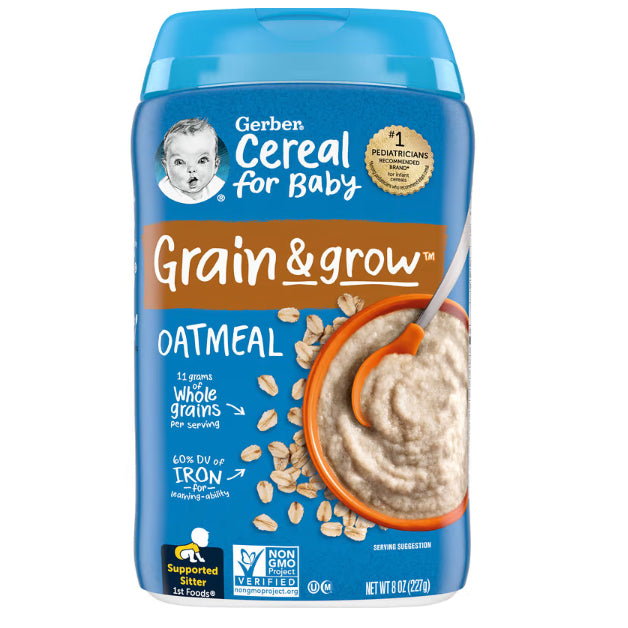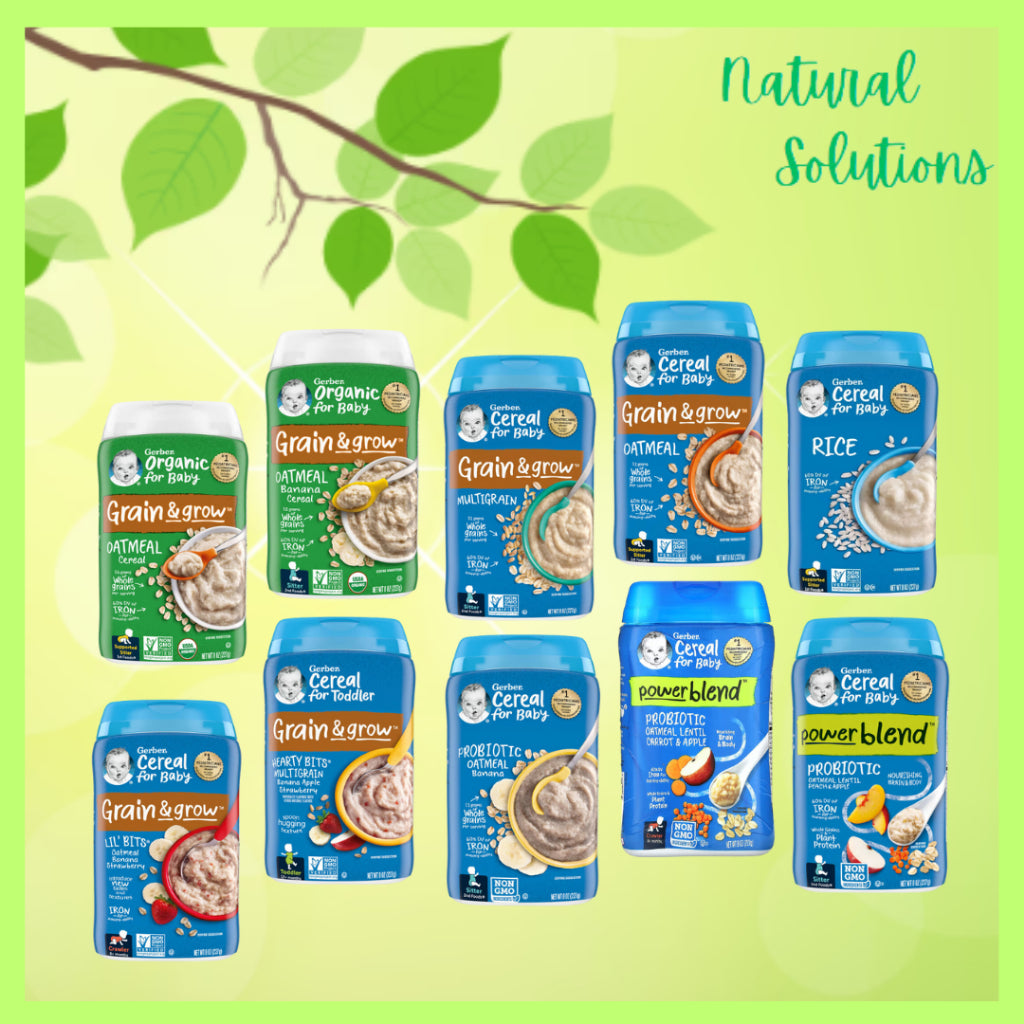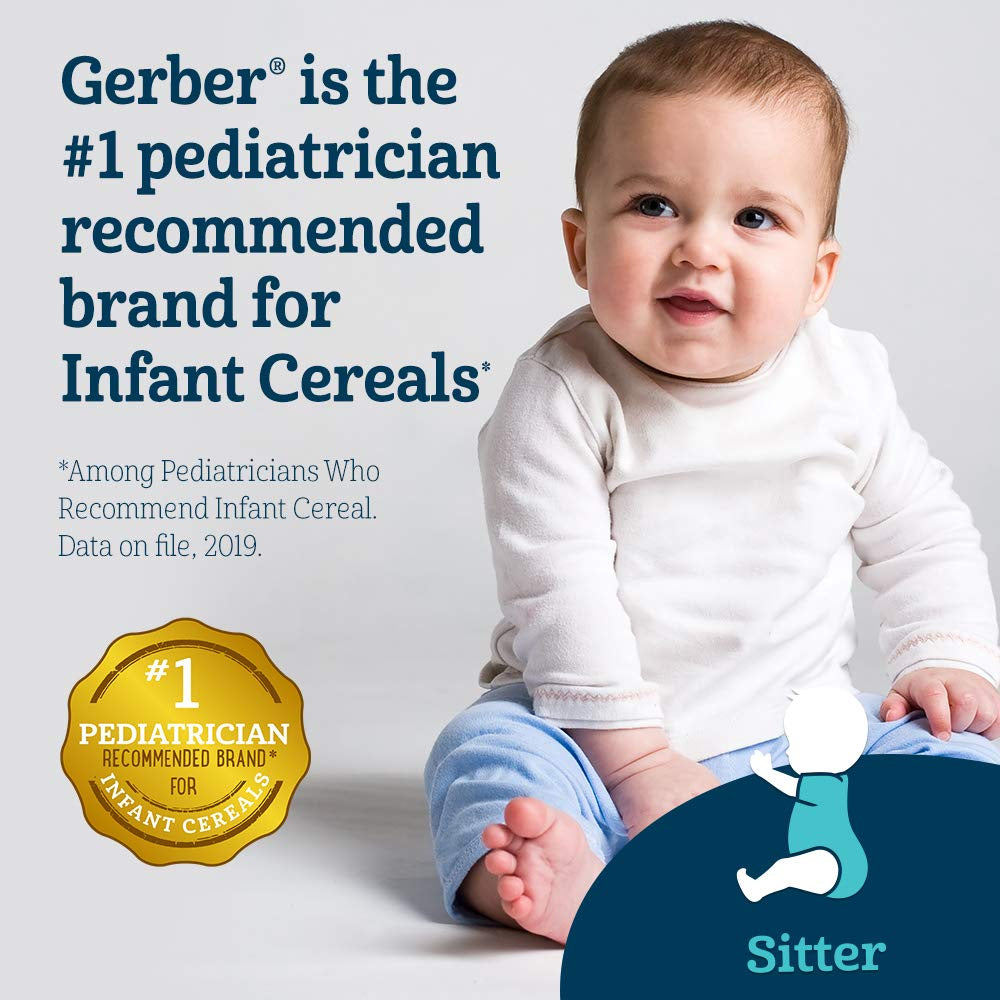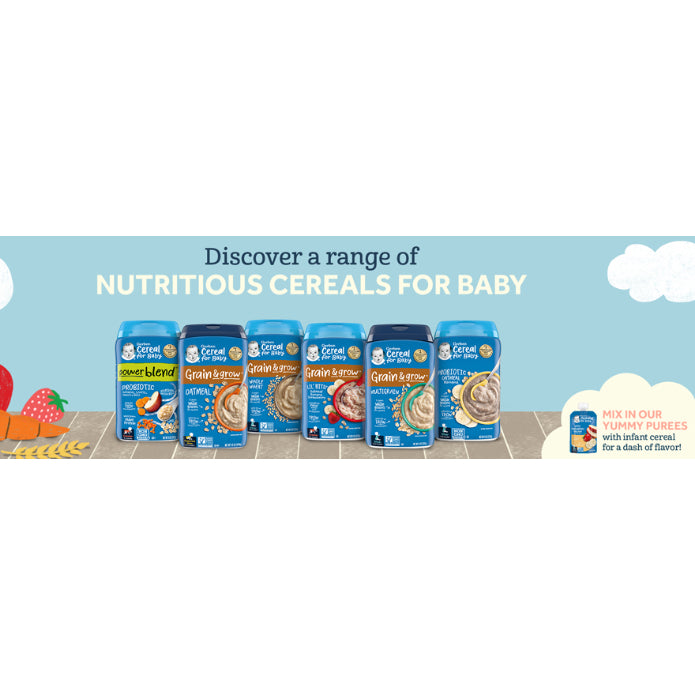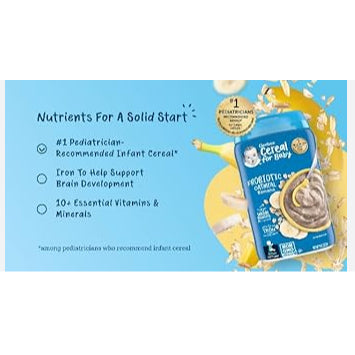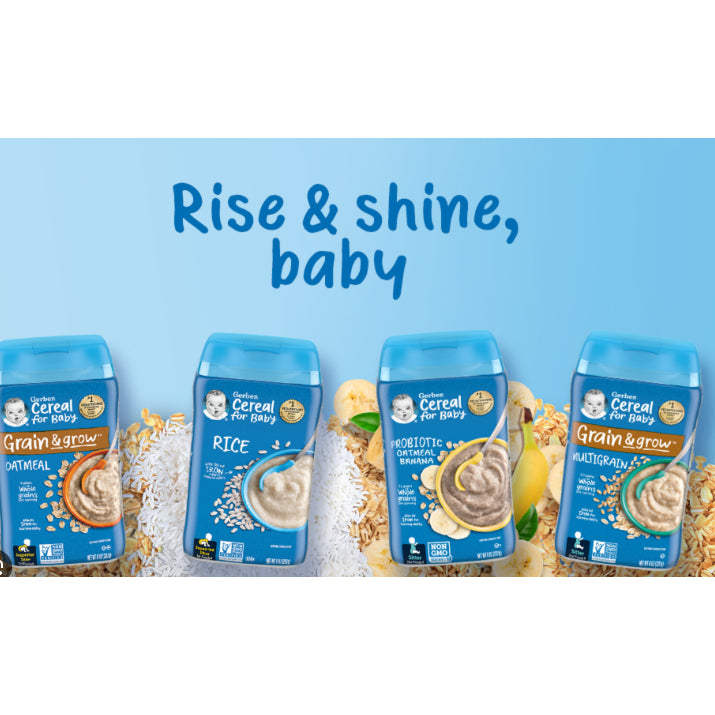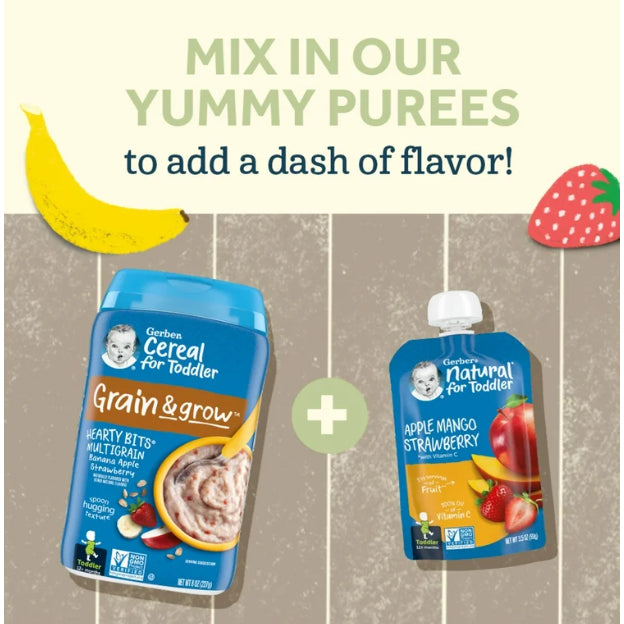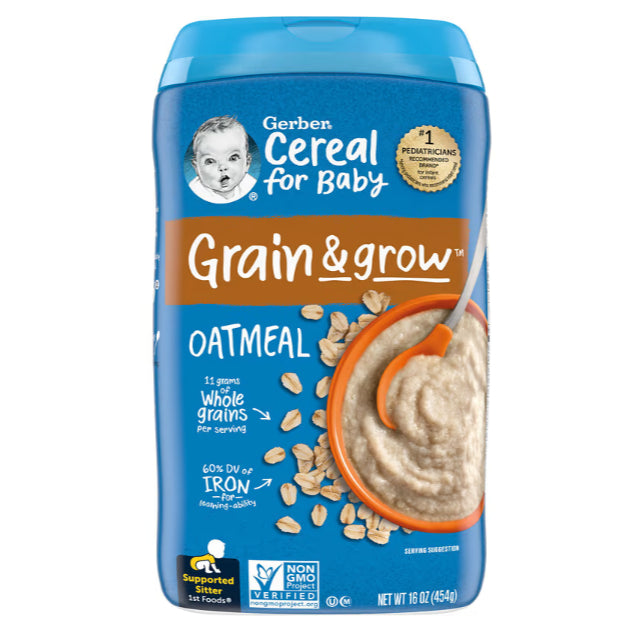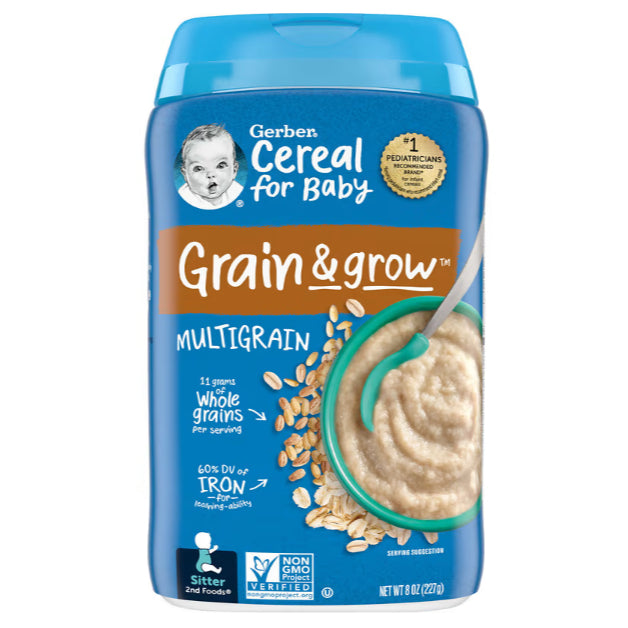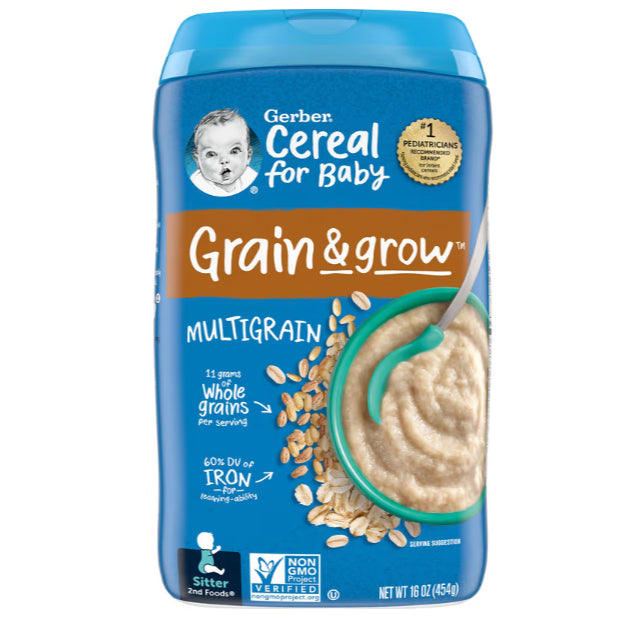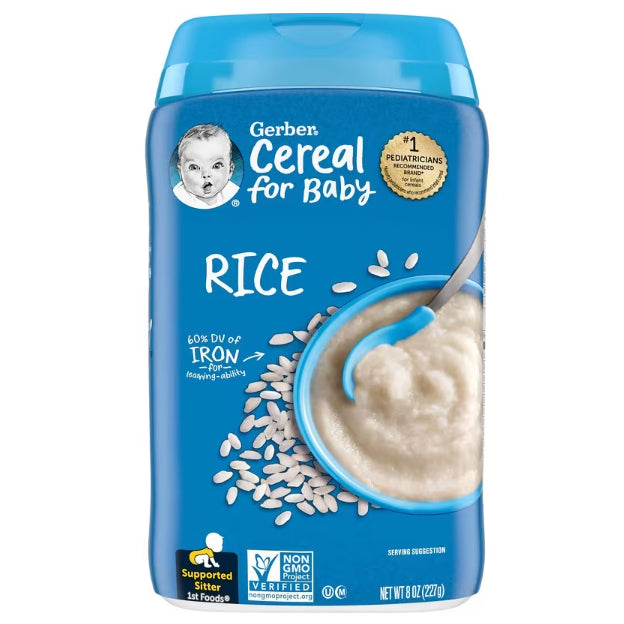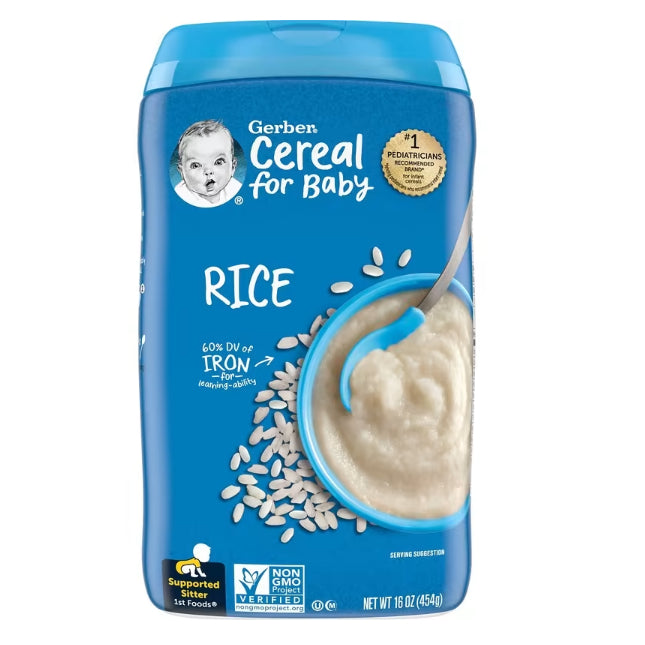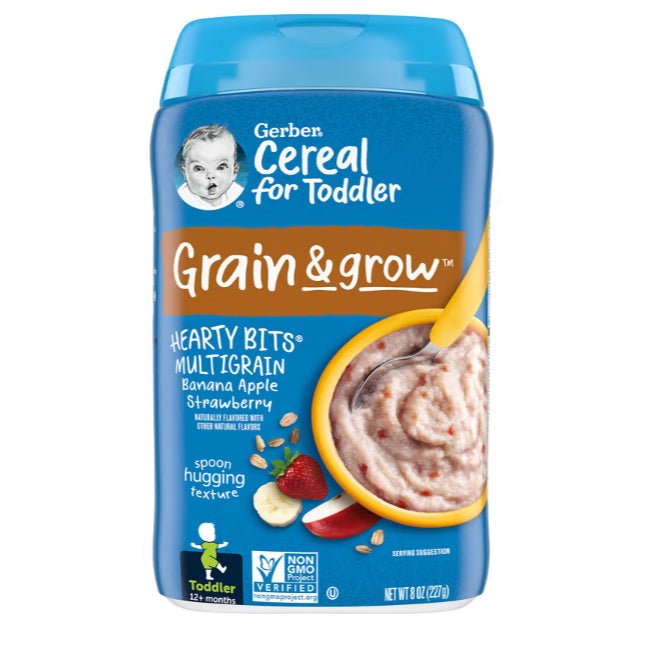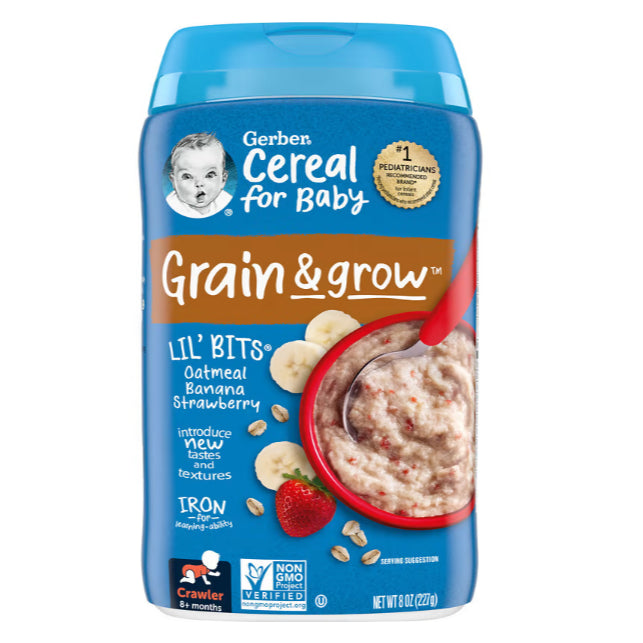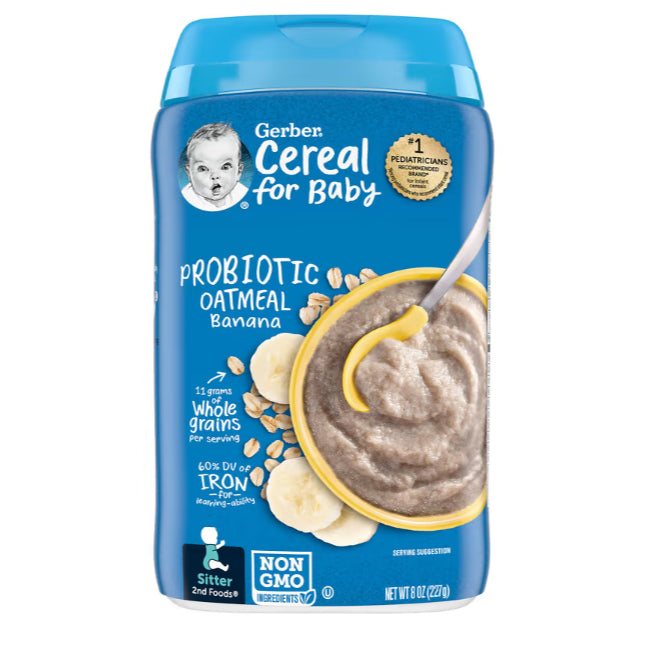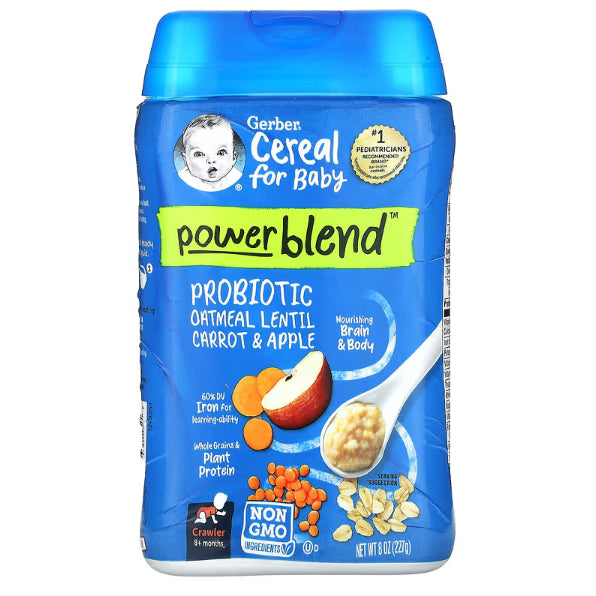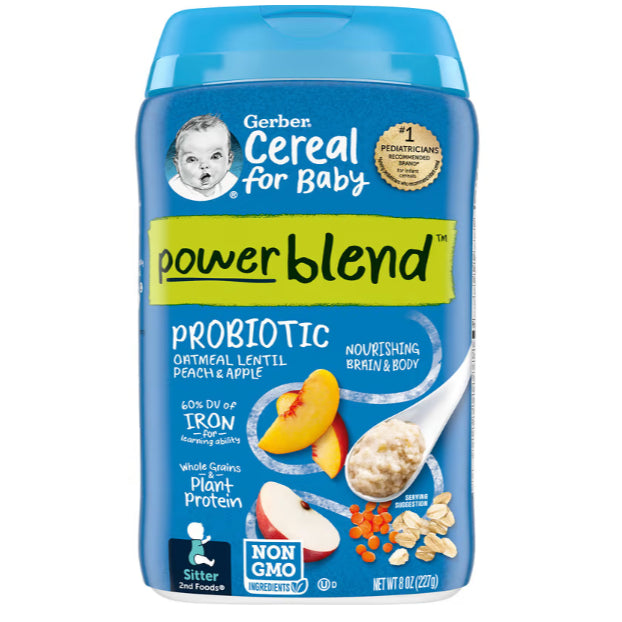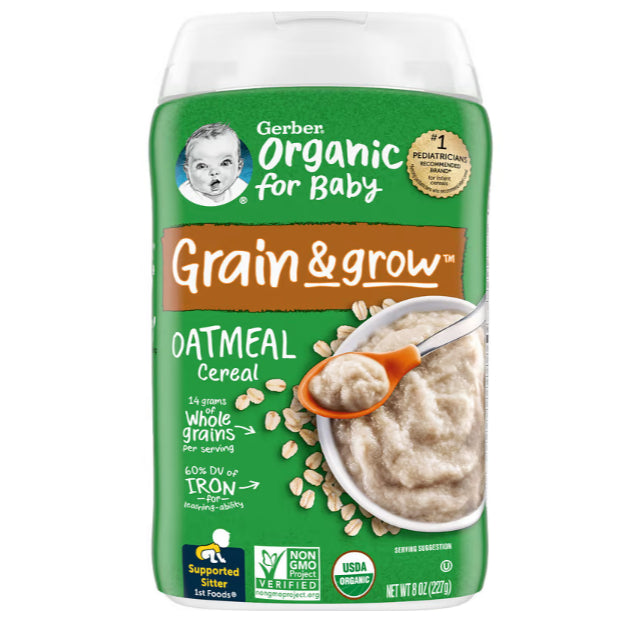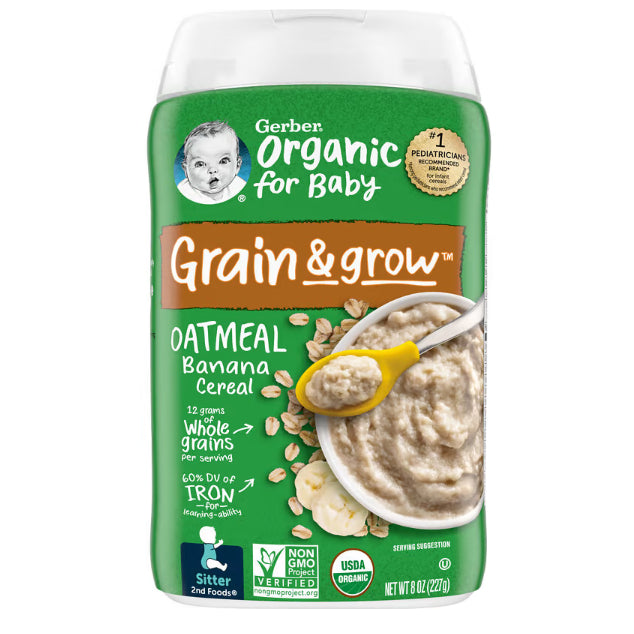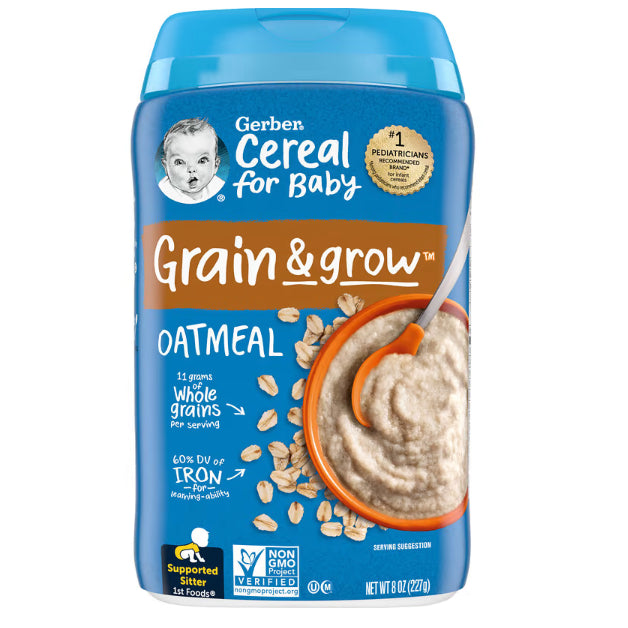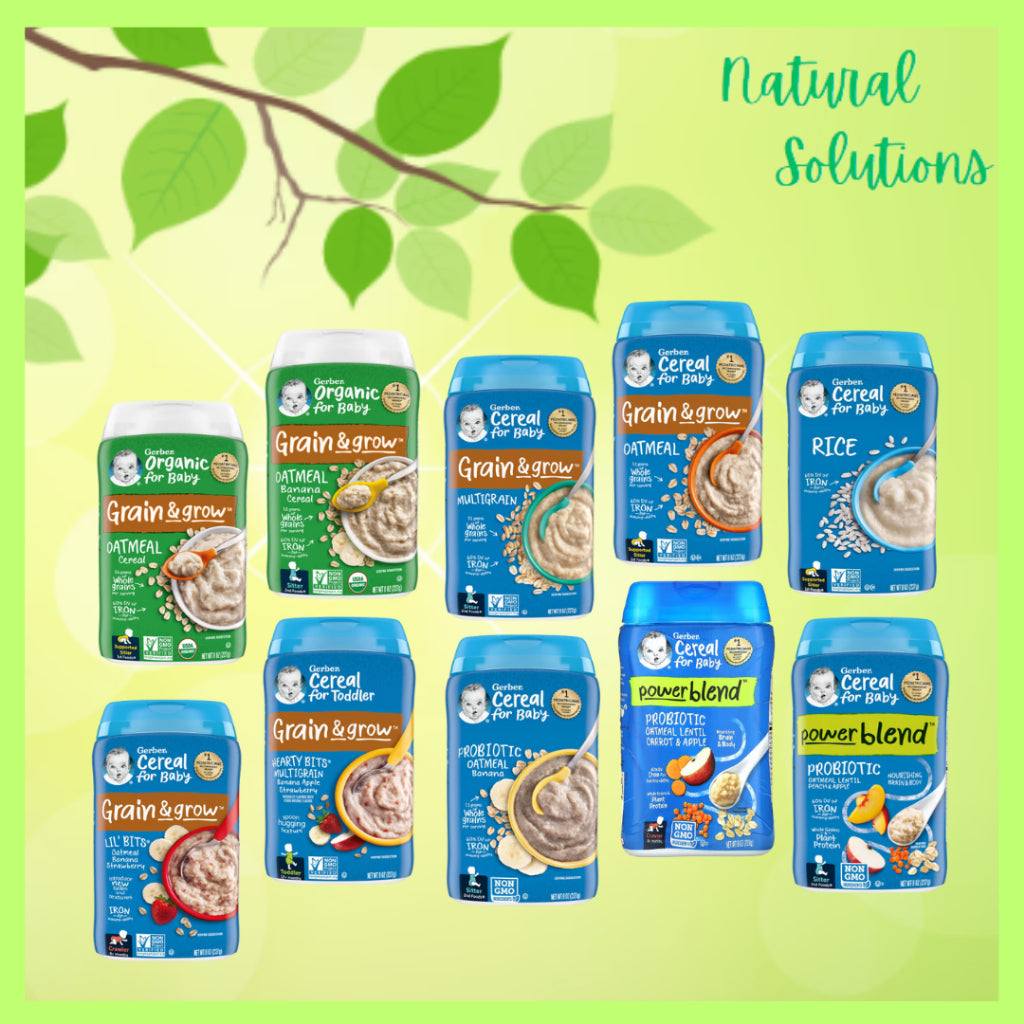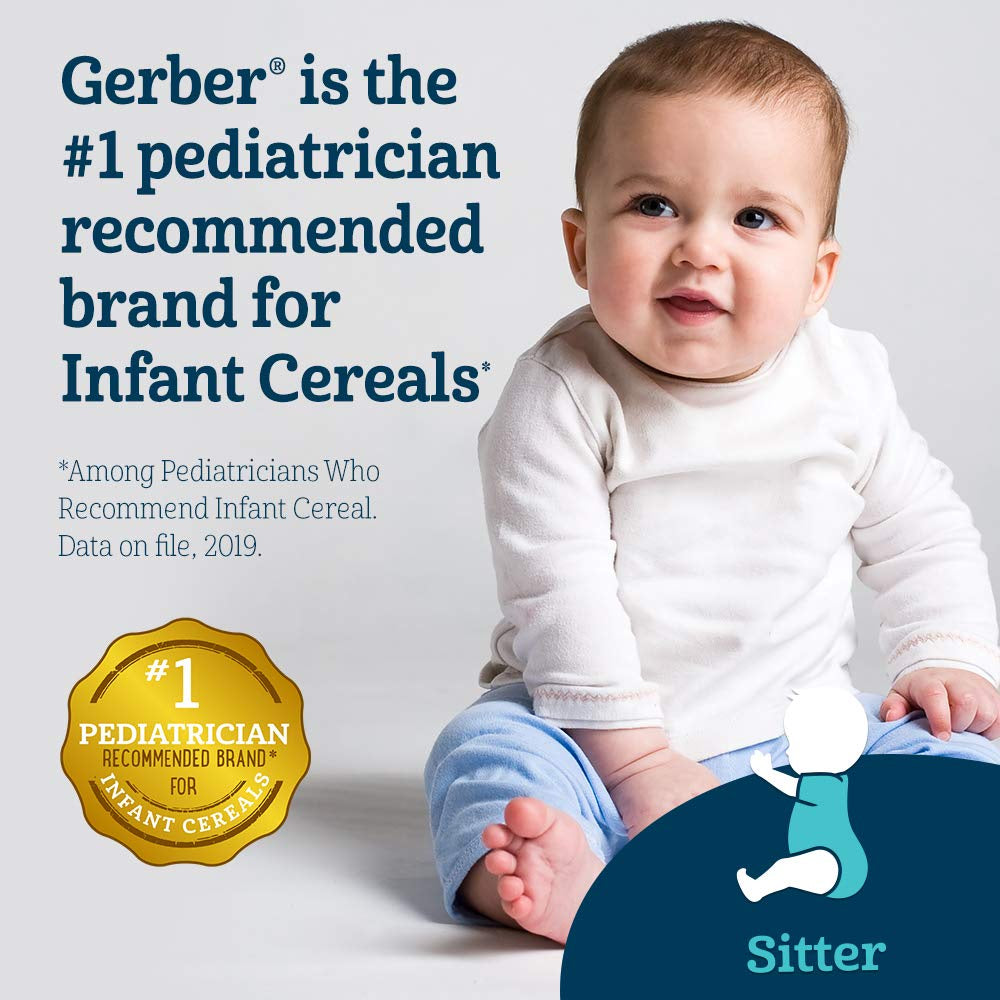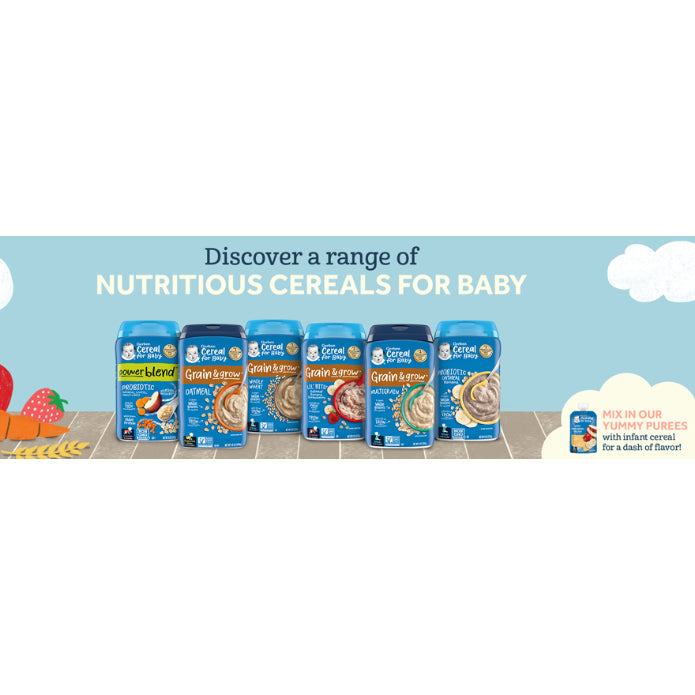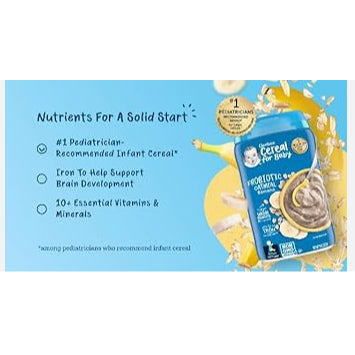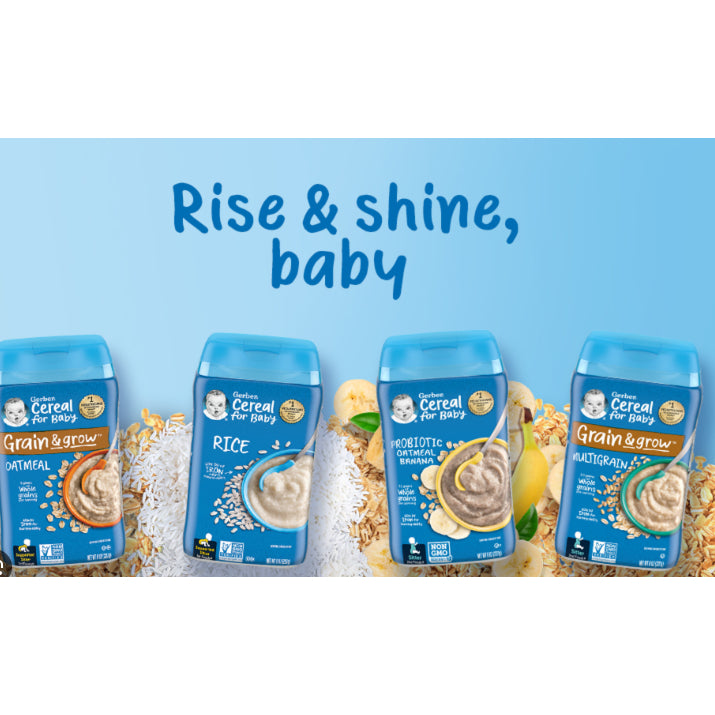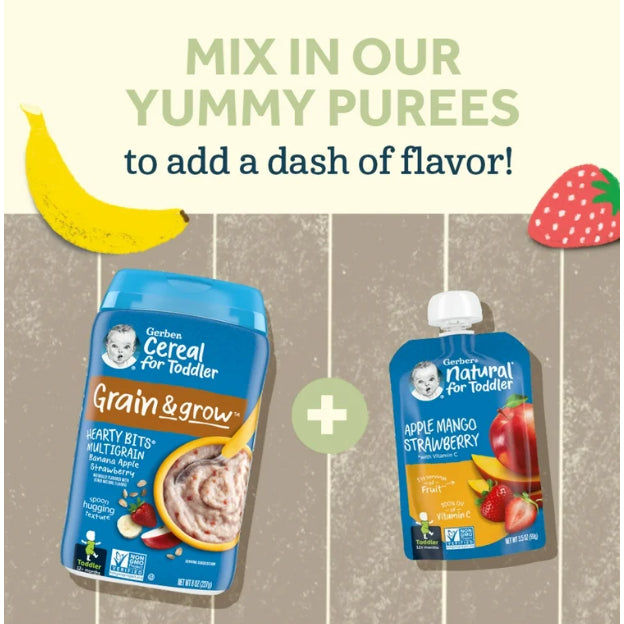1
/
of
10
Low Cost PH
NaturalSolutions | Gerber, Cereal for Baby, Grain & Grow, 1st, 2nd Foods, Power Blend, Oatmeal, Rice
NaturalSolutions | Gerber, Cereal for Baby, Grain & Grow, 1st, 2nd Foods, Power Blend, Oatmeal, Rice
Regular price
₱827.00
Regular price
₱827.00
Sale price
₱827.00
Unit price
/
per
Couldn't load pickup availability
NaturalSolutions | Gerber, Cereal for Baby, Grain & Grow, 1st, 2nd Foods, Power Blend, Oatmeal, Rice
1. Nutritional Benefits
Whole Grains: Many of these cereals, such as Oatmeal, Rice, and MultiGrain, provide essential carbohydrates, fiber, and vitamins to support healthy digestion and energy levels.
Probiotics: Some options like the Probiotic Oatmeal Banana and Probiotic Oatmeal Lentil varieties contain probiotics, which are beneficial for supporting gut health and a healthy immune system, aiding in digestion and nutrient absorption.
Vitamins and Minerals: The cereals often contain added vitamins and minerals like iron, calcium, and folic acid, which are important for brain development, bone health, and overall growth in babies and toddlers.
2. Developmental Appropriateness
First Foods (Rice and Oatmeal): Products like Gerber Rice Cereal and Grain & Grow Oatmeal are designed for younger babies starting solids (usually around 4-6 months). They offer simple, single grains that are gentle on the baby’s digestive system.
Second Foods (MultiGrain, Probiotic Varieties): These are tailored for babies 6 months and older, introducing more flavors, textures, and nutrients, like the MultiGrain Cereal and varieties with fruits like banana, strawberry, apple, and peach.
Toddler Cereal (Hearty Bits, MultiGrain): For toddlers 12 months and older, these cereals (such as the Hearty Bits MultiGrain) provide added texture with small bits of whole grains and fruit pieces, supporting chewing and eating skills as they move into more solid foods.
3. Organic Options
Organic Cereal Varieties: The Gerber Organic Oatmeal Cereal options ensure that your baby’s food is free from synthetic pesticides, fertilizers, and other chemicals, which may appeal to parents seeking organic products for their children.
Natural Ingredients: The inclusion of organic ingredients in some cereals offers a cleaner, more natural option for parents who prefer to avoid non-organic food products.
4. Flavor Variety and Appeal
Fruit Blends: Many cereals are flavored with fruits like banana, apple, strawberry, and peach, which are familiar and pleasant to babies, helping them transition to solid foods with enjoyable tastes.
Balanced Blends: Combinations like Oatmeal Lentil, Carrot & Apple or Oatmeal Banana Strawberry provide not only sweetness from fruits but also a balance of savory or savory-sweet combinations that promote a broader taste palette.
5. Convenience
Easy to Prepare: Gerber cereals are easy to mix with water or breast milk/formula, providing quick meals for busy parents. These options are also available in convenient packaging (like 8 oz and 227 g sizes), making them easy to store and serve.
Ready-to-Serve: For some products, especially the 2nd Foods and toddler options, you can serve them directly with minimal preparation.
6. Allergen Considerations
Simple Ingredients: Many cereals, especially the single-grain options like rice and oatmeal, contain fewer ingredients, reducing the risk
1. Nutritional Benefits
Whole Grains: Many of these cereals, such as Oatmeal, Rice, and MultiGrain, provide essential carbohydrates, fiber, and vitamins to support healthy digestion and energy levels.
Probiotics: Some options like the Probiotic Oatmeal Banana and Probiotic Oatmeal Lentil varieties contain probiotics, which are beneficial for supporting gut health and a healthy immune system, aiding in digestion and nutrient absorption.
Vitamins and Minerals: The cereals often contain added vitamins and minerals like iron, calcium, and folic acid, which are important for brain development, bone health, and overall growth in babies and toddlers.
2. Developmental Appropriateness
First Foods (Rice and Oatmeal): Products like Gerber Rice Cereal and Grain & Grow Oatmeal are designed for younger babies starting solids (usually around 4-6 months). They offer simple, single grains that are gentle on the baby’s digestive system.
Second Foods (MultiGrain, Probiotic Varieties): These are tailored for babies 6 months and older, introducing more flavors, textures, and nutrients, like the MultiGrain Cereal and varieties with fruits like banana, strawberry, apple, and peach.
Toddler Cereal (Hearty Bits, MultiGrain): For toddlers 12 months and older, these cereals (such as the Hearty Bits MultiGrain) provide added texture with small bits of whole grains and fruit pieces, supporting chewing and eating skills as they move into more solid foods.
3. Organic Options
Organic Cereal Varieties: The Gerber Organic Oatmeal Cereal options ensure that your baby’s food is free from synthetic pesticides, fertilizers, and other chemicals, which may appeal to parents seeking organic products for their children.
Natural Ingredients: The inclusion of organic ingredients in some cereals offers a cleaner, more natural option for parents who prefer to avoid non-organic food products.
4. Flavor Variety and Appeal
Fruit Blends: Many cereals are flavored with fruits like banana, apple, strawberry, and peach, which are familiar and pleasant to babies, helping them transition to solid foods with enjoyable tastes.
Balanced Blends: Combinations like Oatmeal Lentil, Carrot & Apple or Oatmeal Banana Strawberry provide not only sweetness from fruits but also a balance of savory or savory-sweet combinations that promote a broader taste palette.
5. Convenience
Easy to Prepare: Gerber cereals are easy to mix with water or breast milk/formula, providing quick meals for busy parents. These options are also available in convenient packaging (like 8 oz and 227 g sizes), making them easy to store and serve.
Ready-to-Serve: For some products, especially the 2nd Foods and toddler options, you can serve them directly with minimal preparation.
6. Allergen Considerations
Simple Ingredients: Many cereals, especially the single-grain options like rice and oatmeal, contain fewer ingredients, reducing the risk
Share
